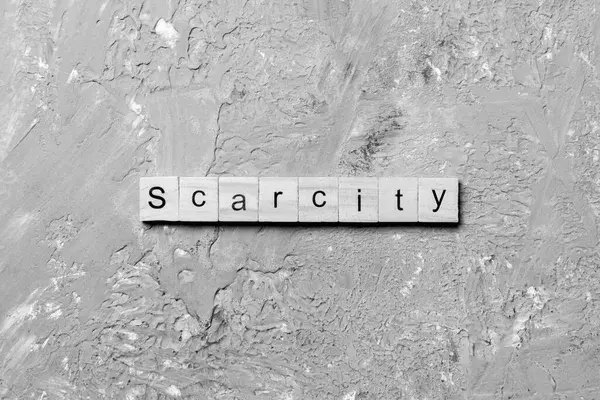Introduction
In the realm of decision-making, our minds are constantly influenced by various mental models that shape our perceptions and judgments. One such powerful mental model is “scarcity,” which refers to the fundamental condition of limited resources. Understanding and recognizing the scarcity mental model is crucial as it plays a significant role in shaping our thoughts, behaviors, and decisions. Anchored in human psychology, scarcity impacts our day-to-day lives in multiple ways, often leading us to make irrational choices contrary to our best interests. In this blog post, we will explore the concept of scarcity, its prevalence in different contexts, the psychological biases that contribute to it, and practical strategies to avoid falling into the trap of scarcity.
Defining Scarcity and Its Relevance
Scarcity can be defined as the condition in which available resources, whether they are tangible goods, time, or even attention, are limited in relation to the demand for them. In a world of finite resources, scarcity shapes our decision-making processes by influencing the value we assign to these resources. When resources become scarce, their perceived value increases, and individuals tend to allocate more attention, effort, and even money towards acquiring or preserving them.
The relevance of scarcity in decision-making is profound. It serves as a cognitive shortcut that helps us prioritize and make choices when faced with limited options. Scarcity captures our attention and triggers a sense of urgency, pushing us to act quickly to secure what we perceive as valuable resources. However, this mental model can also lead to biased judgments and suboptimal decision-making, as we may focus solely on acquiring the scarce resource without fully considering the potential consequences.
Examples of Scarcity in Different Contexts
- Personal Life Decisions: Consider the scenario of a limited-time offer for a vacation package to a dream destination. The scarcity of this offer creates a sense of urgency and the fear of missing out (FOMO). People may be inclined to make impulsive decisions, disregarding other important factors such as their budget or the availability of time off from work. The lure of scarcity can lead individuals to prioritize short-term gratification over long-term financial stability.
- Business Scenarios: In the business world, scarcity often drives competitive behavior and influences market dynamics. Limited supply or high demand for a product can create a perception of scarcity, prompting consumers to rush into purchases they may not have otherwise made. Companies may intentionally restrict the availability of certain products to fuel this perception of scarcity and drive higher demand. For example, limited edition releases of products or time-limited discounts can trigger a scarcity mindset, leading consumers to make impulsive purchases without carefully considering their needs or alternatives.
- Public Policy-Making: Scarcity also plays a role in public policy decisions. Governments often face limited resources and must allocate them efficiently. However, the scarcity mindset can lead to suboptimal policy choices. For instance, in the face of limited funds, a government might choose to cut funding for education or healthcare programs, neglecting the long-term benefits and potential costs associated with these decisions. The perception of scarcity can overshadow comprehensive analysis and lead to choices that do not align with the best interests of the population.
Psychological Biases and Underpinnings of Scarcity
Several psychological biases contribute to the prevalence of the scarcity mental model:
- Loss Aversion: The fear of losing out on a scarce resource is rooted in our tendency to be more motivated by avoiding losses than by acquiring gains. Loss aversion amplifies the perceived value of scarce resources, making us more susceptible to impulsive and irrational decision-making.
- Anchoring Bias: Scarcity serves as an anchor that influences our reference point for assessing value. When a resource is scarce, it becomes the primary reference point, leading us to compare other alternatives against it. As a result, even suboptimal options may appear more attractive when they are less scarce but still more abundant than the reference point.
- Cognitive Load: Scarcity creates cognitive load, occupying our mental bandwidth with thoughts about acquiring or preserving the scarce resource. This cognitive load impairs our ability to think critically and consider alternative perspectives, leading to impulsive and myopic decision-making.
Avoiding the Scarcity Trap
- Recognize Scarcity Signals: Awareness is key to identifying when scarcity is influencing your decisions. Pay attention to the language used in marketing, such as “limited time offer” or “while supplies last.” Recognize the emotional responses these signals evoke and take a step back to evaluate the situation more objectively.
- Delay Decision-Making: When faced with a scarcity-driven decision, consciously delay your response. Give yourself time to assess the situation, consider alternatives, and weigh the long-term implications. This delay helps break the sense of urgency and allows for more thoughtful decision-making.
- Seek Diverse Perspectives: Engage with others who have different viewpoints and seek their input. By exposing yourself to alternative perspectives, you can challenge the scarcity-driven mindset and broaden your understanding of the situation. This process can help you make more informed decisions that align with your long-term goals.
- Focus on Long-Term Goals: Remind yourself of your overarching objectives and values. By keeping long-term goals in mind, you can better evaluate whether the scarce resource truly aligns with your priorities or if it is merely a short-lived temptation.
Conclusion
The scarcity mental model, deeply rooted in human psychology, significantly influences our decision-making processes. From personal life choices to business decisions and public policy-making, scarcity can lead us to make irrational decisions contrary to our best interests. Recognizing the biases associated with scarcity and employing strategies to mitigate its effects are vital steps in avoiding the trap of scarcity. By cultivating awareness, delaying decisions, seeking diverse perspectives, and focusing on long-term goals, individuals can make more objective and informed choices that align with their values and lead to better outcomes. Remember, in a world of limited resources, understanding and actively avoiding the scarcity mental model is a valuable tool for achieving optimal decision-making.
